
Shop Amazon - Create an Amazon Baby Registry
A Tiger Cannon of Tipu Sultan
Cast in 1790-1 AD
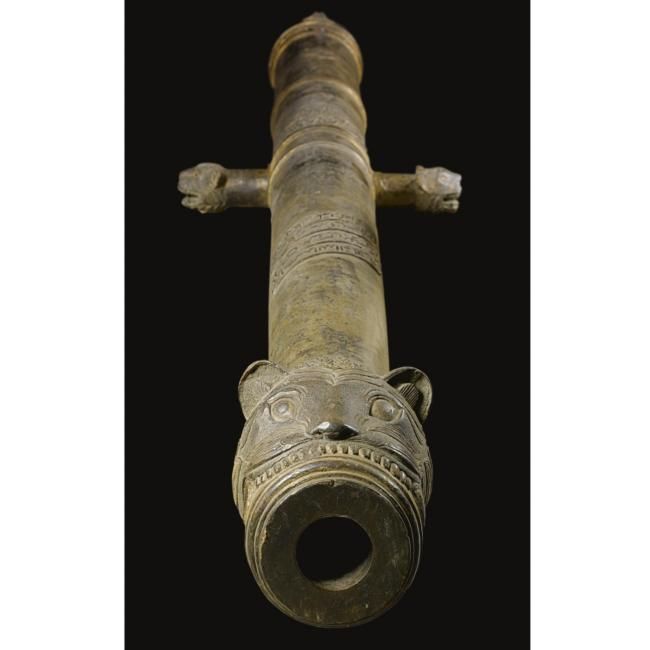
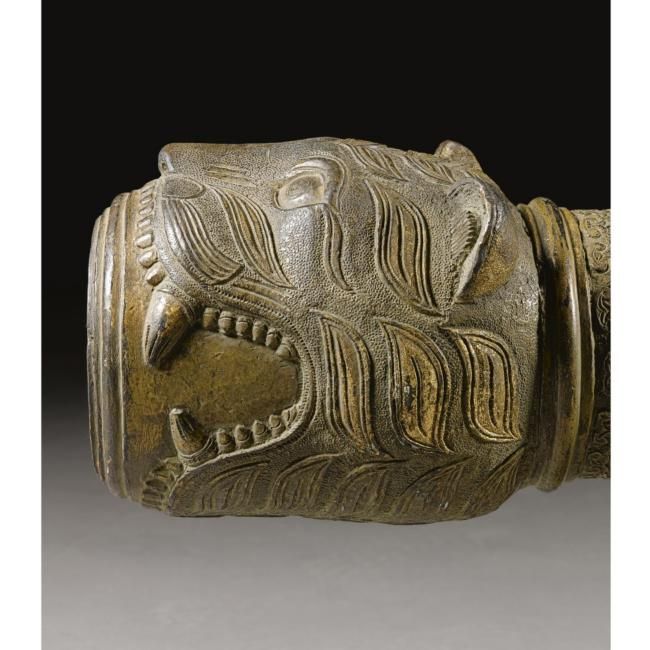
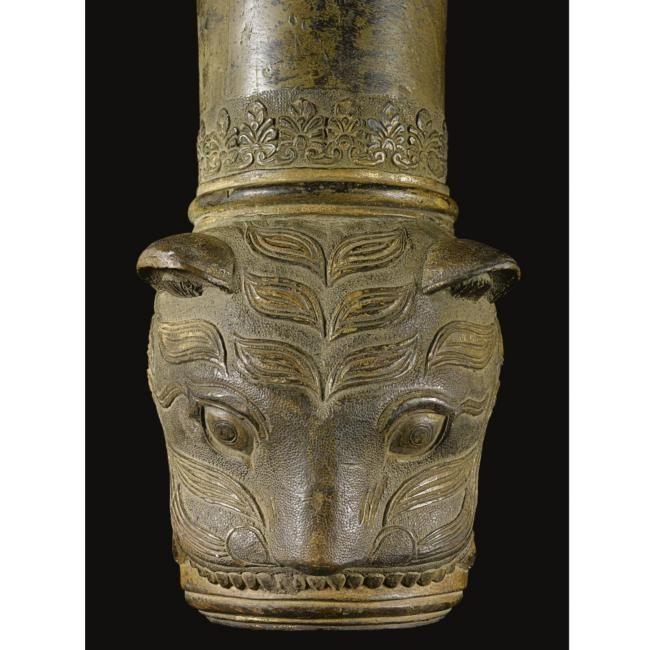
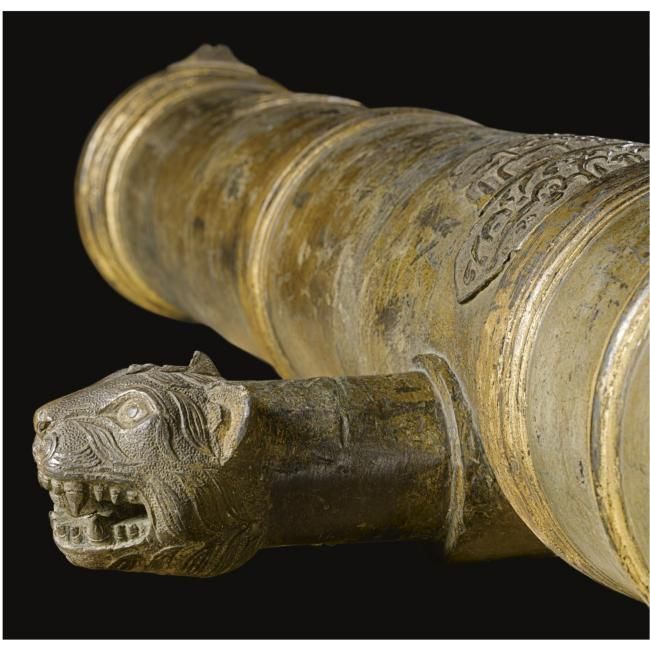
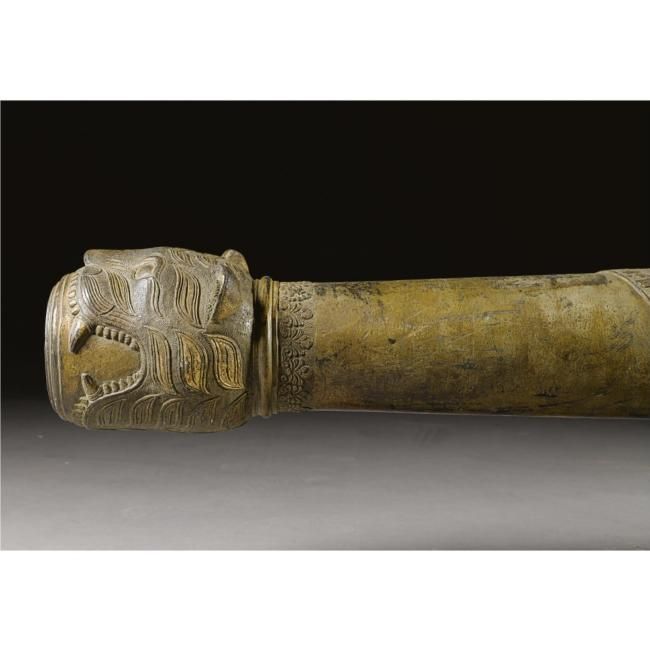
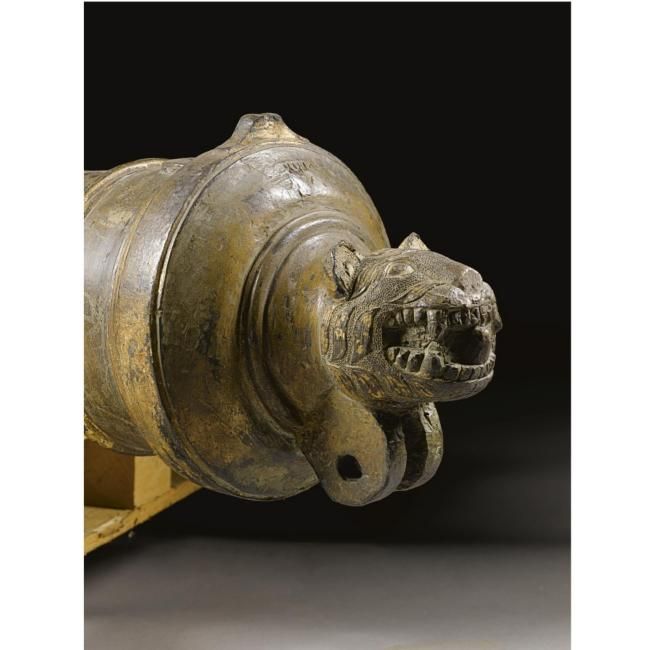







An Extremely Rare Indian Bronze Cannon cast by Ahmad Pali at the royal foundry at Seringapatam, for Tipu Sultan, dated Mawludi year 1219 (1790-1 AD). Photo: Sotheby's.
The tapered characteristic form with convex mouldings and raised rings dividing the advancing segments, the muzzle decorated with leaves and cast with a series of raised cartouches comprising inscriptions, the chase with bubri-shaped cartouches and founder's name and mawludi date, the talismanic square divided by bubri, the muzzle, trunnion ends and cascable button cast in the form of tiger heads - 254cm.
Inscriptions
Talismanic device: H/Y/D/R 'Haydar'
19th Century British inscriptions: ANO 10 2 PR / 9-0-19 (twice) / 2 PR
'Triumphant Lion of God! From the computation of the letters the year of accession of Sarkar-e-Haydari will be found, the year zebarjad, the year 9121 of [the Prophet] Muhammad'.
'The craftsman Ahmad Pali'.
'Unloaded weight of the cannon fourty-four pounds one grain, weight of shot ninety-six nuts'.
'Manufactured in the capital Patan'.
Tipu Sultan
Tipu Sultan and his father, Haidar Ali, dominated South India for over thirty years between 1767 and 1799. Tipu Sultan was a legend in his own lifetime. He foresaw a strong Navy and Army that would have strategic value to match his fighting opposition. He had a great military mind, designing his own army and weaponry, but still understood that his strength lay with his subjects.
Tipu founded his capital at Seringapatam where he ruled his kingdom of Mysore. During his lifetime he established two foundries for brass cannon, arsenal and powder magazines, one at Seringapatam and the other at Bangalore. At the fall of Seringapatam, 927 cannon were captured of which over half were cast at his foundries. The present example carries the Haidar talismanic square which indicates that it was cast at the Royal foundry.
The more popular image of Tipu was as a tryant, monster, bigot, inhumane and dedicated towards a holy war against his enemies. However, he is also recognised across the sub-continent as a nationalist hero who struggled for independence but stood up to the British, dying defending the gates of his palace against the imperial oppressor.
Tipu's personal insignia was the tiger. Through this, all of his possessions, including the garments of his courtiers and soldiers were adorned with tiger stripes or bubris. The classic bubri is an S-shaped form, wide at the middle, with a hollow centre and re-curving ends of equal size. The motif was adopted around 1780 and was continued until his death in 1799. Tipu's name in Canarese means tiger and he was given this name by his father (whose name can also mean tiger or lion). This ornamentation featured on every item at his court from the infantry tiger jackets, to objects themselves made in tiger form.
As well as this, a further motif which was often found on Tipu's armoury, also derived from his beloved tigers. A written symbol in Arabic 'Asadullah al-Ghalib' meaning 'The Victorious Lion of God' or 'The Lion of God is the Conqueror', obviously in reference to himself, can be found on the present cannon. The characters in this cipher can be carefully arranged and then mirrored to resemble the face of a tiger.
Source